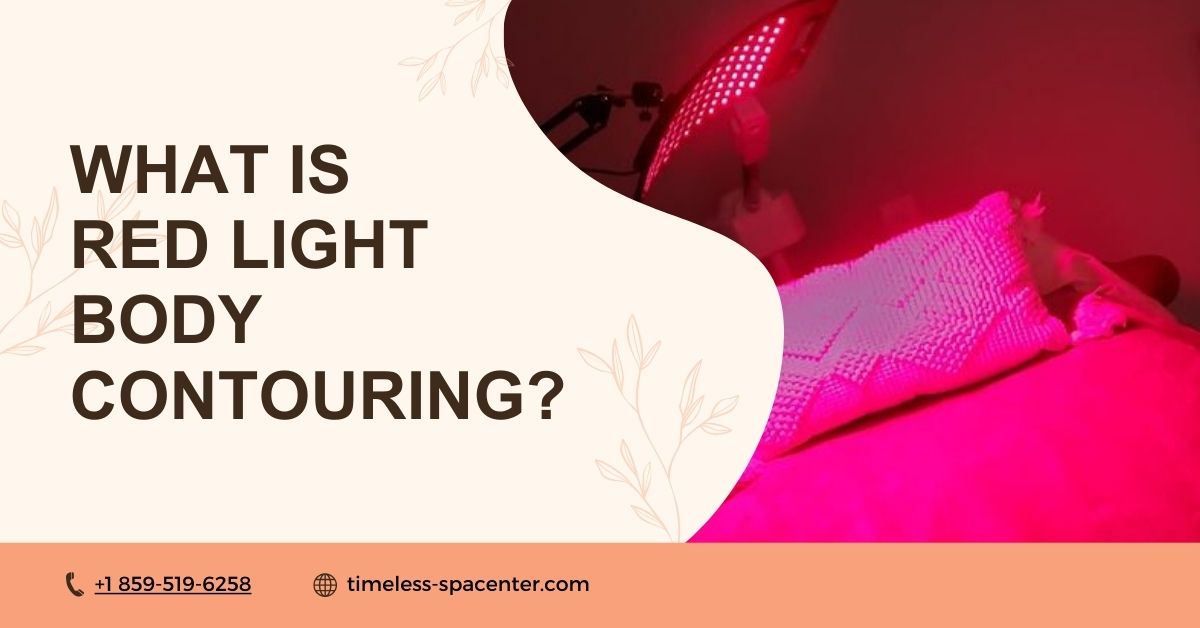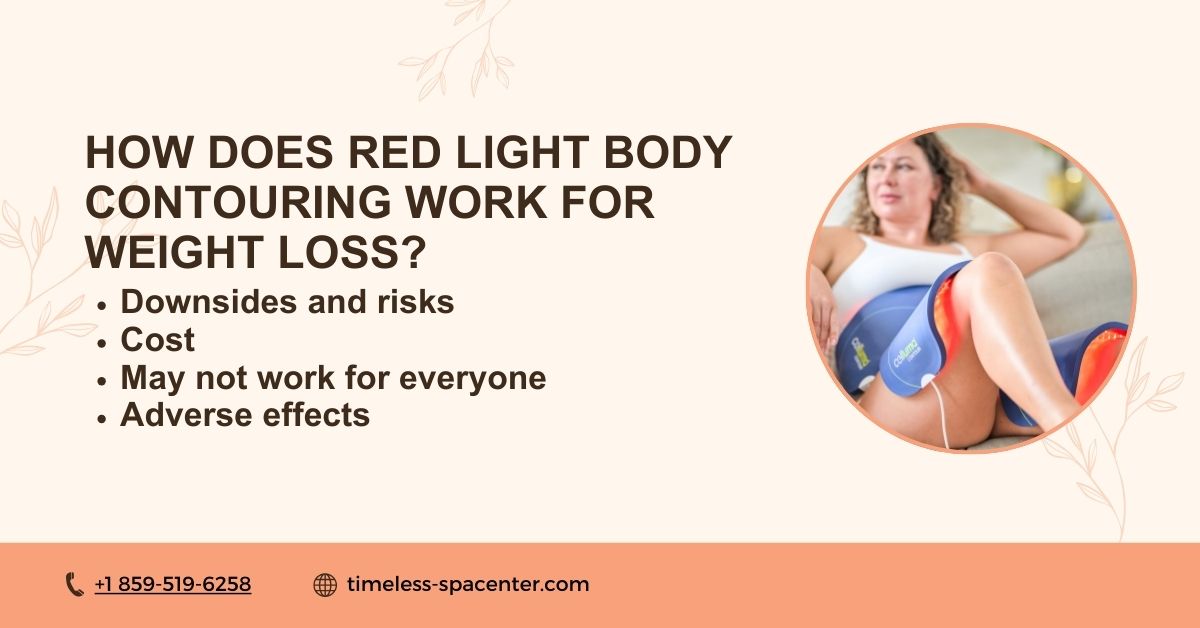Red light body contouring is an innovative approach that utilizes red light therapy to promote weight loss and body sculpting, which can lead to modest 0.8-inch modifications in body measurements. This technique, also known as low-level laser therapy (LLLT), targets fat cells in specific areas of the body, thereby assisting individuals who wish to lose weight without the invasive methods associated with traditional liposuction.
The therapy devices emit wavelengths of near-infrared light, which penetrate the skin to stimulate cellular processes, potentially leading to skin improvements and enhanced collagen production. By helping to reduce inflammation and promoting fat loss, red light therapy is becoming increasingly popular in clinics that specialize in body contouring, with two participants experiencing noticeable results.
How Long Does Red Light Body Contouring Take?
The duration of red light body contouring sessions can vary, but typically, each treatment lasts about 20 to 30 minutes, with minimal downtime afterward. Many individuals may undergo multiple sessions per week, depending on their specific weight loss goals and the targeted areas. The convenience of these therapy sessions is appealing, as they can be integrated with a routine of exercise and a healthy diet to maximize fat loss.
One study found that consistent LLLT treatments contributed significantly to reductions in body circumference, making it an attractive option for those who struggle with weight regain or have a lack of time for traditional weight loss methods. If you’re wondering how long does body contouring last, it’s essential to consider that while results can vary, many experience lasting changes when combined with healthy habits.
How Does Red Light Therapy Work?
Red light therapy works by utilizing specific wavelengths of light to stimulate the body’s cells, particularly targeting fat cells while considering the potential for skin damage. This process, known as photobiomodulation, encourages the release of fatty acids and glycerol, resulting in a natural fat loss effect, which can lead to a shrinkage in abdominal girth.
Research shows that red light therapy may help reduce the size of fat cells in targeted areas, thereby contributing to modest reductions in abdominal girth and body contouring efforts. It is important to understand the differences between Body Contouring vs Liposuction, as both approaches aim to enhance body shape but utilize different methods. By promoting better circulation and reducing inflammation, red light therapy can enhance overall well-being, making it an effective complementary therapy for those committed to losing weight.
Understanding how red light therapy works can empower individuals to make informed decisions regarding their body contouring journeys, especially in relation to their eating habits.
How Does Red Light Body Contouring Work for Weight Loss?
Red light body contouring works through a process called photobiomodulation, where specific wavelengths of near-infrared light are utilized to target fat cells in designated areas of the body. During this therapy, the light penetrates the skin and stimulates the cells, promoting fat loss by encouraging the release of fatty acids and glycerol from the fat cells, which may also help reduce skin issues.
This mechanism directly contributes to EMS body contouring, allowing individuals who wish to lose weight to achieve a slimmer appearance without the invasiveness of liposuction. Studies have shown that consistent sessions of low-level laser therapy (LLLT) can help reduce body circumference and may improve overall weight loss efforts.
Downsides and Risks
While the benefits of red light therapy are notable, there are also downsides and risks associated with its use. One significant concern is the cost of treatments, which can add up if multiple sessions are required for optimal results.
Additionally, the effectiveness of red light therapy for weight loss may not be uniform for everyone. Individual differences in body composition and metabolism can impact the results, meaning that some may not achieve the desired fat loss, particularly if they do not adopt healthy eating habits.
Understanding these potential downsides is crucial for individuals considering this therapy as part of their body sculpting journey, particularly regarding skin damage.
Cost
The cost of red light therapy sessions can vary widely depending on the clinic and the specific treatment plan. Typically, the price for a single session ranges from $50 to $200, and many individuals find themselves needing multiple treatments to see significant results, particularly if they aim to shrink their abdomen. This expense can deter some people from pursuing red light therapy for weight loss, especially if they are already managing other costs related to health and wellness, including dietary modifications.
Budgeting for these therapy sessions is essential, as individuals should weigh the potential benefits against the financial commitment required for consistent treatment, especially when considering their bmi.
May not work for everyone
While many individuals experience positive outcomes from red light therapy, it is important to note that this method may not work for everyone, and pilot studies are needed to explore its effectiveness. Factors such as genetics, lifestyle, and overall health can influence the effectiveness of the treatment, which may be a drawback for some individuals.
For some, the body may not respond as well to low-level laser therapy (LLLT) as it does for others, leading to minimal fat loss and body contouring results. This inconsistency underscores the importance of setting realistic expectations and recognizing that red light therapy should be part of a broader approach to losing weight, including proper exercise and nutrition.
Adverse Effects
Although red light therapy is generally considered safe, some individuals may experience mild adverse effects following treatment; randomized studies are needed to assess these effects comprehensively. These can include temporary redness, swelling, or discomfort in the treated areas, typically within 2 cm of the treatment zone. In rare cases, more severe reactions may occur, such as burns or skin irritation, particularly if the therapy devices are misused or improperly calibrated, which can be a significant drawback.
It is vital for individuals to consult with qualified professionals at clinics that specialize in red light therapy to mitigate these risks and ensure a safe experience while pursuing their body sculpting goals through this innovative approach.
Recommendation
For individuals considering red light therapy for weight loss and body contouring, it is highly recommended to consult with professionals at a well-established clinic specializing in this innovative approach. Engaging with qualified practitioners can provide insights into how red light therapy works and its potential benefits tailored to individual needs.
It’s essential to undergo a thorough evaluation to determine if low-level laser therapy (LLLT) is suitable for your body composition and weight loss goals. Additionally, incorporating regular exercise and a balanced diet alongside therapy sessions can significantly enhance fat loss and body sculpting results, supporting better eating habits.
Research shows that combining these lifestyle changes with red light therapy can yield optimal outcomes, particularly for those looking to lower their bmi and achieve modest reductions in abdominal girth. Setting realistic expectations is vital as well; while many may find success with this method, understanding personal limits will foster a healthier journey toward losing weight.
What Are the Benefits of Red Light Therapy?
Fat Loss
Red light therapy devices are becoming increasingly popular for their numerous health benefits, including the ability to shrink fat cells and improve collagen production. One significant advantage is losing fat. Studies have found that red light therapy can aid in body fat reduction. This non-invasive procedure can be targeted to specific areas of your body to help in losing fat and achieving a healthy weight, providing a convenient way to lose inches, though some may find it a drawback if results aren’t permanent.
The therapy leverages infrared and laser light to break down fat cells in the treatment area, typically within 2 cm of the targeted site. Additionally, red light therapy to lose fat often shows a reduction in waist circumference, making it a viable option for fat loss.
Wellness
Red light therapy is also beneficial for overall wellness and may improve skin health. It stimulates the body’s natural healing processes and can enhance physical activity performance, which is crucial for overall endocrinology health, yet individuals should be aware of any potential drawbacks. This treatment can be done in a doctor’s office, dermatologist, or chiropractic clinic.
It’s a noninvasive treatment that offers positive results without the need for surgery, which can lead to skin improvements and increased collagen production. Numerous studies have shown the benefits of lllt (Low-Level Laser Therapy) in promoting cell regeneration and reducing inflammation, which are essential for a sustainable healthy lifestyle and effective endocrinology practices.
Others
For those looking to use light therapy to lose weight, the results can be promising. Studies with a control group have demonstrated that this therapy can be effective, helping to decide whether the results are long-lasting. However, whether the results are long-term can depend on various factors, including lifestyle choices and adherence to a balanced diet.
Incorporating glp-1 and other supplements could also help maintain the results are long term. This whole body treatment is a non-invasive and effective way to assist in weight management and overall health, particularly when combined with healthy dietary choices that may also help reduce abdominal girth.
Potential Red Light Therapy Dangers
While red light therapy presents numerous benefits, it is essential to consider potential dangers associated with its use. One of the primary risks includes the possibility of adverse skin reactions, such as irritation or burns, if therapy devices are not properly calibrated; studies are needed to further understand these risks. Individuals must ensure that they receive treatments from licensed clinics with experienced staff to mitigate these risks and ensure that participants experience the best outcomes.
Furthermore, the cost of ongoing treatments can become a burden, as many may need multiple sessions to achieve desired results. It’s crucial for potential patients to weigh these financial implications against the benefits of red light therapy for weight loss and consider their healthy eating habits.
Additionally, this method may not be effective for everyone; individual factors such as metabolism and lifestyle can significantly impact outcomes, which may improve with a tailored approach. Therefore, thorough research and professional consultation are vital before embarking on this body contouring journey.



